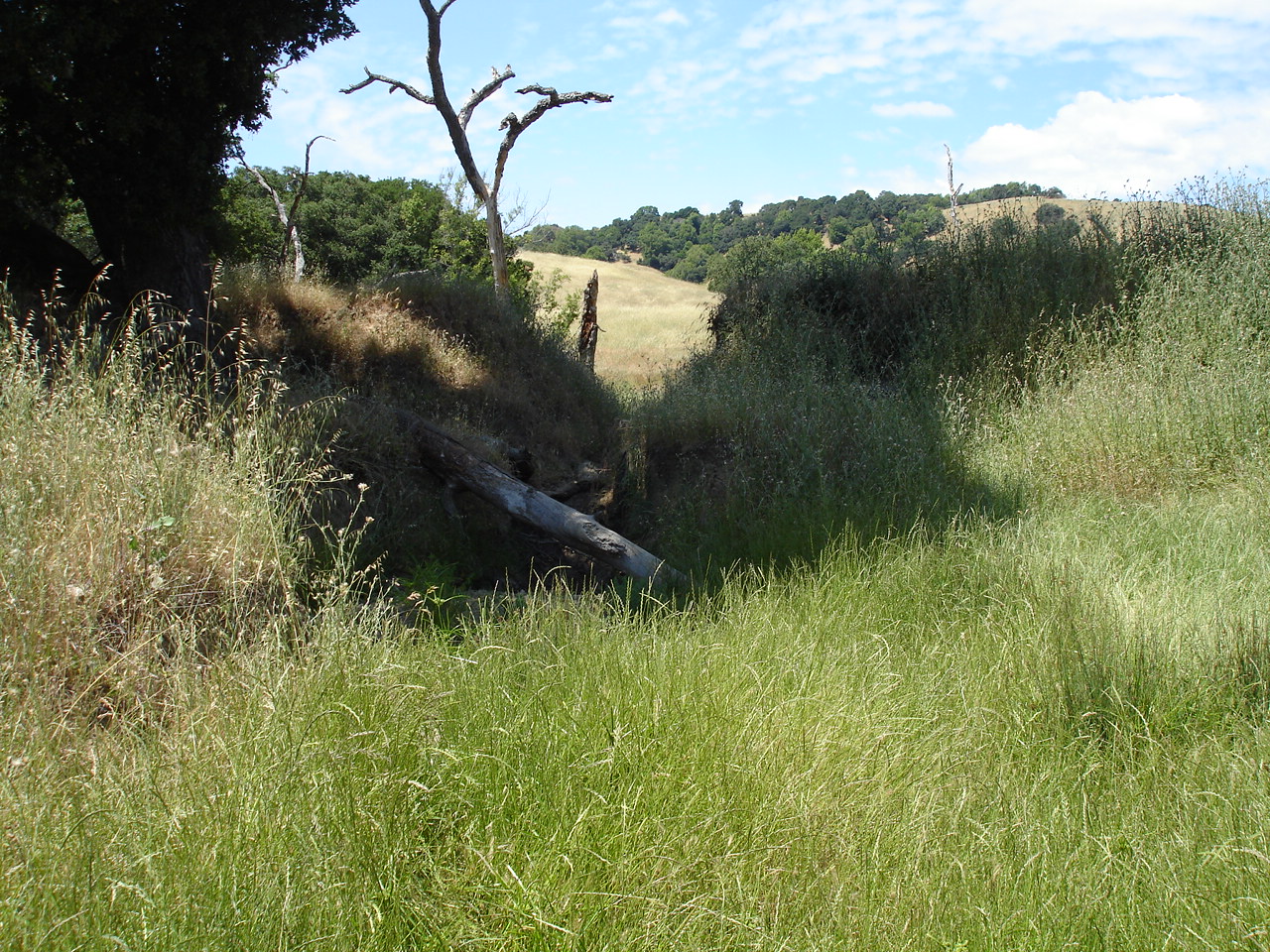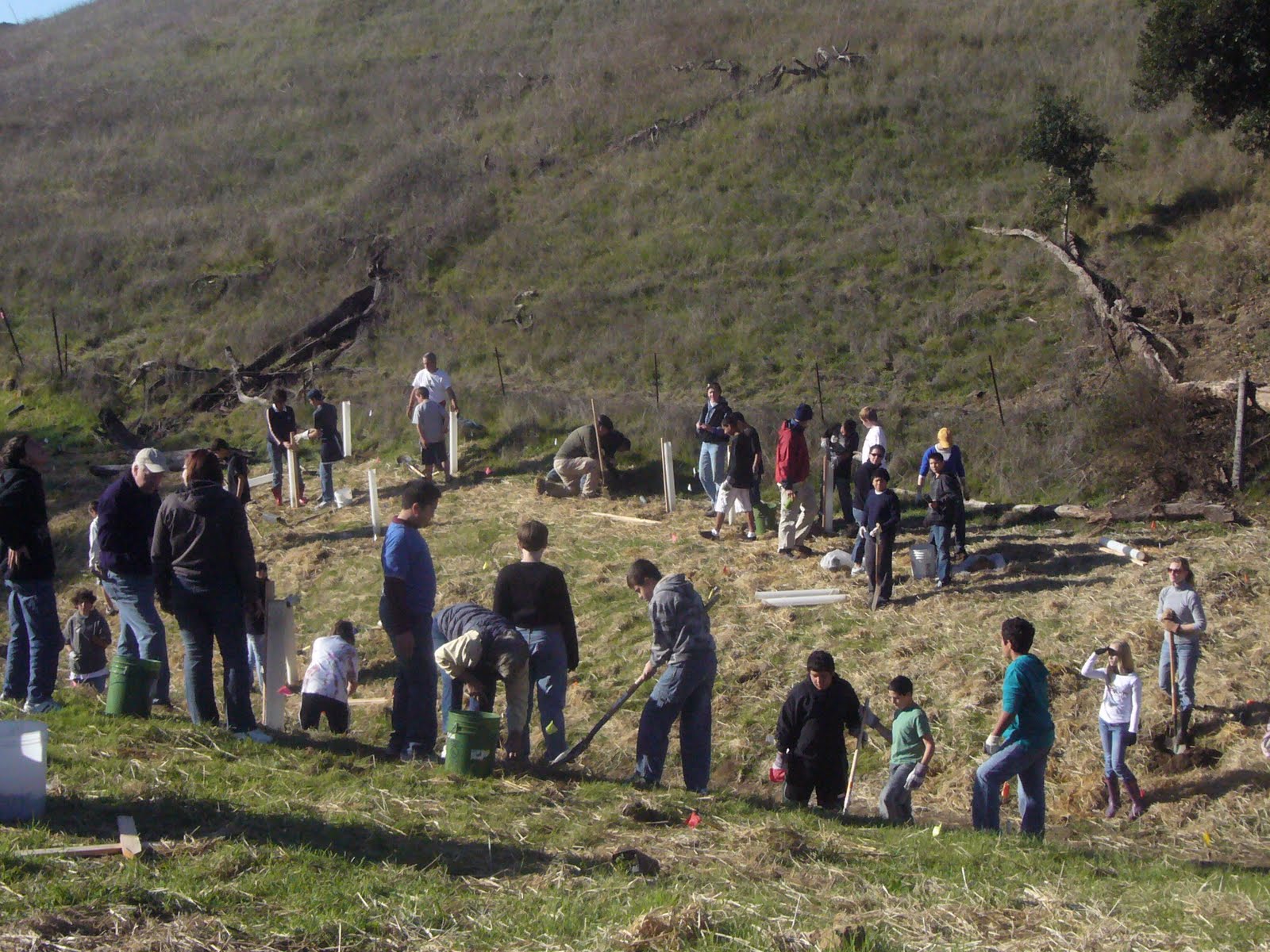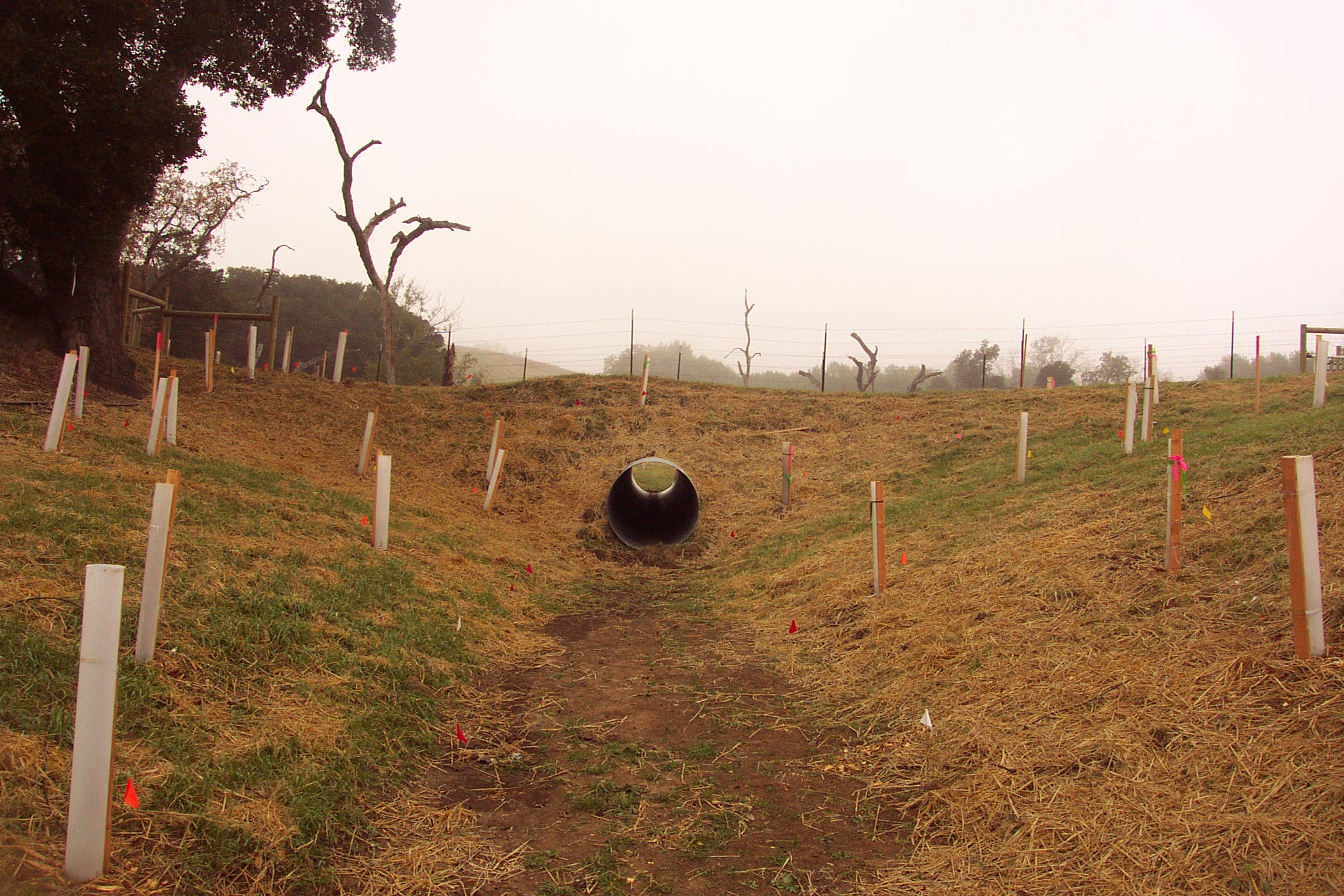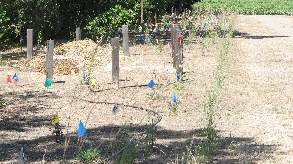|
|
|
|
|
|
Note: As of March 1 2019, this application is no longer supported.
Please use the
Calflora Planting Guide instead -- it has the latest and best information.
| |
|
CONSERVATION STORY:
Channel Bank Vegetation (322) at Scott Creek
Project size:
1200’ long channel, planting on both sides of channel, up to 10’ from channel
|
|
In Fall 2009, the Napa County RCD partnered with a landowner
in the Carneros Creek watershed to removed THE major source of sediment input
into Carneros Creek. Three eroding earthen dams
were excavated from a 1200-foot stretch of Scott Creek (a tributary of Carneros Creek),
and the slopes of the steep channel were laid back to prevent future erosion.
|
|
Sediment is a major pollutant of waterways in the Napa River watershed;
sediment has a detrimental effect on the ability of fish eggs to survive and hatch.
Since Carneros Creek is a Steelhead trout (threatened species) bearing creek,
it is important to protect this habitat by reducing as much erosion
into Carneros creek as possible.
Since the slopes on the project after the excavation work were bare,
it was important to plant native plants – to keep the soil in place,
and to provide habitat for wildlife.
With Harvest Middle School students over two days,
1000 native tree, shrubs, and perennials were planted on the banks.
All plants were protected from herbivores by growtubes,
and protected from weed competition by mulch.
|

|
|
Since the 2009 planting, Boy Scouts, New Tech High School students,
and Saintsbury Winery staff have added more grasses and insectary plants
to the channel banks.
Trees and shrubs were irrigated during the first two summers.
Weed management has required ongoing attention,
weedwackers have been deployed annually,
and blackberry, thistles, and broom have been removed by
minimal herbicide and volunteers using hand tools.
|
| |

| What the site looked like before any work (June, 2009)
|
|

| The planting crew on November 19, 2009
|
|

| After the first planting (December, 2009)
|
|

| 21 months later
(August, 2011)
|
|
|
THE PLANT LIST
|
| |
